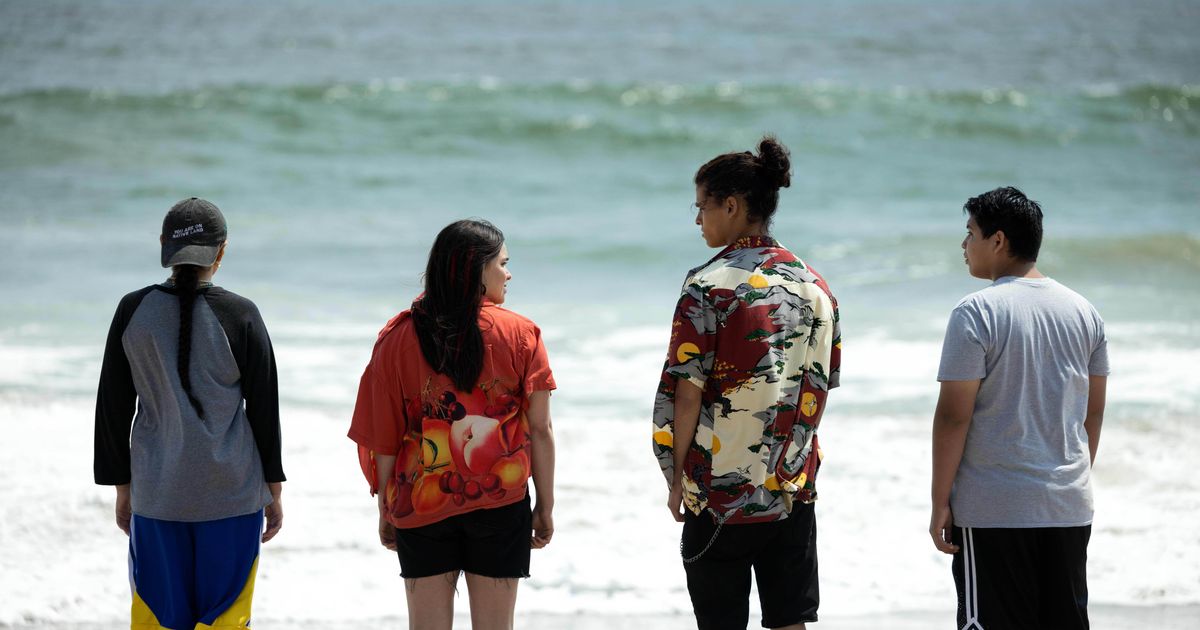The FX series “Reservation Dogs” has truly become my top recommendation when anyone asks for a must-watch show. It is an extraordinary and groundbreaking series that pushes the boundaries of television. What sets it apart is its exceptional representation of Native culture, both in front of and behind the camera. With an all-Native main cast, writers, and directors, the show offers a perspective rarely seen in mainstream media. Moreover, its filming on Muscogee Nation land in Oklahoma adds a genuine sense of place and authenticity.
One of the standout qualities of “Reservation Dogs” lies in its visual and stylistic approach. Each episode delivers a remarkably transformative experience, seamlessly transitioning between wry humor and poignant moments. It defies categorization and surpasses expectations, making it a challenge to capture its essence with a simple description. To truly appreciate the show, I often find myself urging others to watch and trust that they will witness something exceptional.
As the third season kicks off on Hulu, “Reservation Dogs” maintains its excellence and showcases what has made it remarkable thus far. Creator Sterlin Harjo has announced that this season will be the show’s last, which is bittersweet. However, it’s heartening to see a series conclude on its own terms, rather than being abruptly canceled. Unfortunately, shows created by people of color and historically underrepresented communities rarely get such an opportunity.
In the beginning of Season 3, we witness the Rez Dogs—Bear, Elora Danan, Willie Jack, and Cheese—transitioning into adulthood, standing on the precipice of change. In Season 2, they fulfilled their late friend Daniel’s dream by traveling to Los Angeles and experiencing life far from home. Now, they grapple with what lies ahead and how adulthood will shape their lives. It feels like a natural point for the series to conclude.
“Reservation Dogs” doesn’t shy away from the harsh realities of Native trauma, beautifully exploring themes of colonialism, exploitation, and their impact on Native communities. The third season delves into the heartbreaking history of federal Indian boarding schools, highlighting the abuse suffered by generations of Native children. However, the show ensures that Native people are not solely defined by their traumas, infusing warmth and humor into their stories.
As this incredible series comes to a close, one cannot help but wonder if Hollywood executives will learn from its success. Unfortunately, history suggests otherwise. With ongoing strikes in Hollywood revealing corporate greed and a broken system, it is frustrating to witness artists fighting for fair pay and working conditions while executives continue to profit without considering their demands. Underrepresented voices are often the first casualties of cost-cutting measures. Will we see more shows like “Reservation Dogs” created? In an ideal world, the answer would be a resounding yes, but the reality of Hollywood’s flawed system tells a different story.
It’s crucial to recognize that there is an abundance of Native talent and stories waiting to be shared, regardless of Hollywood’s involvement. Native artists and creators from underrepresented communities have always found ways to make their own work, fostering community and supporting each other’s endeavors. The people behind “Reservation Dogs” have exciting projects in the pipeline, ensuring that their voices will continue to be heard. The question now is whether these shows will receive the necessary support and infrastructure to thrive, including promotional campaigns and awards recognition. Too often, shows like “Reservation Dogs” are overlooked, despite their critical acclaim.
Describing “Reservation Dogs” as one of a kind is a compliment, but it should not stand alone. We should strive for an abundance of shows like it—each with its unique voice and narrative. In an industry plagued by inequality and systemic barriers, it’s time for Hollywood to step up and pave the way for genuine diversity and inclusion.
Denial of responsibility! VigourTimes is an automatic aggregator of Global media. In each content, the hyperlink to the primary source is specified. All trademarks belong to their rightful owners, and all materials to their authors. For any complaint, please reach us at – [email protected]. We will take necessary action within 24 hours.


